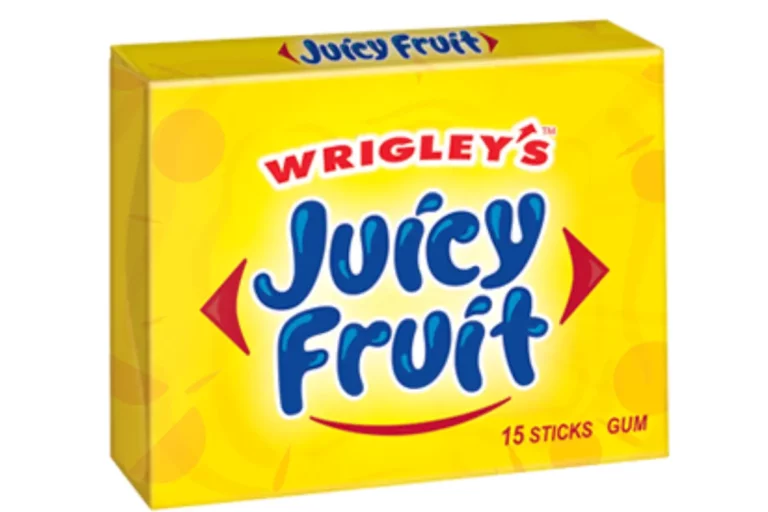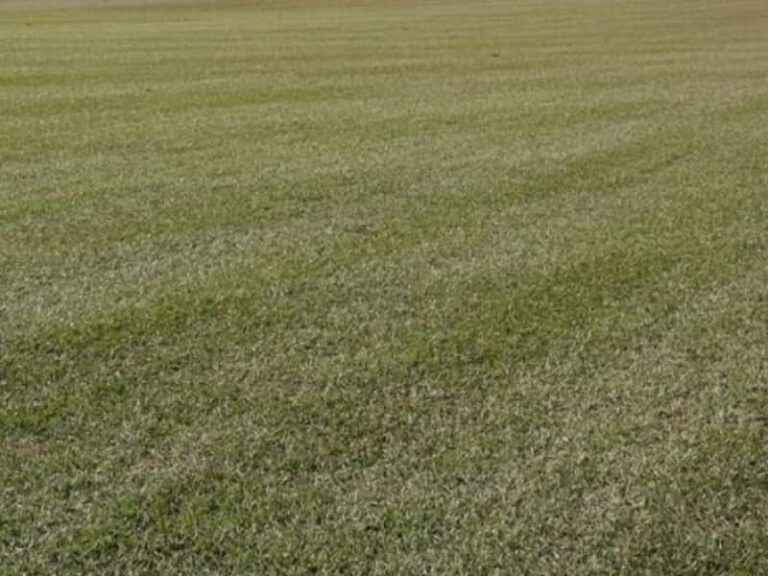Perennial Ryegrass Vs. Kentucky Bluegrass
Perennial ryegrass and Kentucky bluegrass are both cool-season turf grasses known for their fine-textured leaf blades and distinctive shades of green. Though some might mistake them, there are several differences between these two turf types of grass. To get the best of either world, you can also mix perennial ryegrass seeds with Kentucky bluegrass seeds.
What is perennial ryegrass?
Perennial ryegrass is a cool-season turfgrass species that thrive in sunny conditions and partial shade. You can identify this grass variety by its fine-textured grass blades that also have parallel margins. The grass blades also have tapered tips, folded vernation (the blade is folded in the bud), and attach to the shoot indirectly via auricles that clasp around the stalk.
Perennial ryegrass has a bunch-type growth habit and lacks rhizomes and stolons. However, it germinates rather fast and the seedlings grow quickly via tillers (vertical shoots) to form clumps of grass. And true to its name, perennial ryegrass reappears yearly, forming a permanent lawn.
Note: Other noticeable physical characteristics of perennial ryegrass include greenish-white seed heads, a wide leaf blade collar, and a fibrous root system.
Similar to most other cool-season grasses, perennial ryegrass’ active growing season is in the fall and in the spring. Its growth slows down during the summer months and may go dormant in some cases.
Perennial ryegrass has decent cold tolerance and also boasts the best wear tolerance among all cool-season turfgrass varieties. It’s for this reason that it’s often used as the turfgrass of choice in high-traffic areas like public parks and playgrounds.
What is Kentucky bluegrass?
Kentucky bluegrass is a cool-season turfgrass species that thrive in the Northern regions and in the transition zones due to its superior cold-hardiness. One of this grass type’s most unique identifying features is its blue-green color, which it derives its name from. The leaf blade has a semi-fine texture, is boat-shaped at the tip, and features lines on either side of the midrib.
Kentucky bluegrass leaf blades lack auricles and thus attach directly to the stem. They also have short, membranous ligules. Kentucky bluegrass has an open panicle for a seed head, with flattened spikelets each carrying 3-5 seeds.
Kentucky bluegrass, though slow to germinate, spreads quickly via underground rhizomes once it’s established to form thick sod. However, its growth rate slows down during the warmer months, and will even go dormant during periods of prolonged drought and excessive summer heat.
Note: Kentucky bluegrass’ lower tolerance for heat and drought can be attributed to its relatively shallow root system, as it’s unable to draw water from deep in the soil.
Since Kentucky bluegrass grows readily to form thick thatch, it has great wear recovery and will grow back quickly after suffering physical damage. This same quality is what makes it a winter hardy turf grass as well.
Perennial ryegrass vs. Kentucky bluegrass
Despite having a few similarities such as fine-textured grass blades and spikelets on the seed head, perennial ryegrass and Kentucky bluegrass are quite different. You can tell these two turf types of grass apart by their physical appearance, wear tolerance, shade tolerance, drought tolerance, growth habit, and germination rate.
Here is a summary table: Perennial ryegrass vs. Kentucky bluegrass differences.
| Perennial ryegrass | Kentucky bluegrass |
| Has auricles; leaf blade has tapered tip | Lacks auricles; leaf blade is boat-shaped |
| Great wear tolerance; slow to recover from injury | Poor wear/traffic tolerance; but quick-wear damage recovery |
| Prefers full sun but will also tolerate partial shade | Prefers full sun and partial shade, but is slightly more shade tolerant than perennial ryegrass |
| Decent drought hardiness and decent drought tolerance | Excellent cold hardiness but poor drought tolerance |
| Fibrous root system; vertical, bunch-type growth via tillers to form clumpy grass | Rhizomatous root system; fast-spreading to form a thick sod |
| Germinates quickly (5-7 days) | Slow germination rate (3 weeks or more) |
| Can be planted both in the fall and in the spring | Best planted in the fall |
Physical appearance
There are a number of noticeable physical differences between perennial ryegrass and Kentucky bluegrass. For instance, perennial ryegrass has pointed auricles, while Kentucky bluegrass lacks auricles. Also, perennial ryegrass has tapered leaf tips, while Kentucky bluegrass has boat-shaped leaf tips. Finally, while Kentucky bluegrass has deep ridges on the lower surface, perennial ryegrass has these sharp creases on the upper side of the leaf blade.
Durability/ traffic tolerance/ wear recovery
Perennial ryegrass has better wear tolerance than Kentucky bluegrass, or any other cool-season grass variety, for that matter. However, Kentucky bluegrass makes up for this by having a better wear recovery rate. Thus, while a perennial ryegrass lawn withstands high traffic better, a Kentucky bluegrass turf recovers much quicker from damage caused by heavy traffic.
Sunlight needs/ shade tolerance
Though both Kentucky bluegrass and perennial ryegrass both thrive in sunny and partially shaded conditions, the former is slightly more shade-tolerant grass. In fact, Purdue University’s turfgrass science program recommends having a higher percentage of Kentucky bluegrass than perennial ryegrass in turf mixes for planting in shaded areas. Perennial ryegrass, therefore, ranks as one of the best grass varieties for low light lawns.
Cold hardiness
Kentucky bluegrass is colder tolerant in comparison to perennial ryegrass. The latter turfgrass species has moderate cold tolerance but usually goes dormant in very cold winter weather. By contrast, Kentucky bluegrass is the most cold-hardy of all common cool-season turfgrass varieties.
Drought tolerance
Perennial ryegrass has better drought and heat tolerance compared to Kentucky bluegrass. This can mainly be attributed to the fact that Kentucky bluegrass has a shallow root system but is still one of the best grass for clay soil. Take note, though, that both of these turfgrass varieties are likely to die out in the extreme heat of the summer on Southern lawns.
Growth habit/roots
Perennial ryegrass has an extensive, fibrous root system and a bunch-type growth habit; growing via vertical shoots called tillers to form clumps of grass. On the contrary, Kentucky bluegrass has a shallow root system and spreads fast through underground runners known as rhizomes to form dense turf. Kentucky bluegrass is a type of grass variety that grows well in sandy soil.
Germination
Kentucky bluegrass germinates about three times slower than perennial ryegrass. You can expect your perennial ryegrass lawn to be established and ready for mowing 5-7 days post-seeding making it one of the best types of grass for golf courses. By contrast, Kentucky bluegrass seeds take 21 days or more to sprout into seedlings.
When to plant
Kentucky bluegrass is best planted in the fall, which is its peak growing season. Meanwhile, for a thriving perennial ryegrass turf, you can plant it both in the fall and in the spring. Avoid planting either of these turfgrass varieties in winter or in the heat of the summer.
Pros of Perennial Ryegrass:
- Has excellent wear hardiness
- Germinates quickly
- Excellent drought tolerance
Cons of Perennial Ryegrass
- Slower wear recovery
- Slow growth/dormancy in the summer
Read More: Pros and Cons of Ryegrass
Pros of Kentucky bluegrass
- Beautiful blue-green color
- Excellent cold hardiness
- Excellent injury recovery
Cons of Kentucky bluegrass
- Slow germination rate
- Poor drought tolerance
Read More: Pros and cons of Kentucky
Kentucky bluegrass and perennial ryegrass mix
You can mix Kentucky bluegrass seed with perennial ryegrass seed to form a turf grass mix that’s more drought tolerant and disease tolerant. Perennial ryegrass adds drought hardiness and wear-tolerance to the mix, while Kentucky bluegrass improves the turf’s resistance to diseases like gray leaf spot, brown patch, and dollar spot.
Note: For an even stronger turf blend, you can mix perennial ryegrass and Kentucky bluegrass with tall fescue (Tall fescue-50%, Kentucky bluegrass- 30%, Perennial ryegrass- 20%).
One disadvantage of mixing these two turfgrass species is that one germinates faster than the other. You, therefore, have to wait until the Kentucky bluegrass germinates as well to mow the lawn for the first time. This is usually about a month or so after planting.
References
- Zac Reicher and Clark Throssell, Purdue University Department of Agronomy: Improving Lawns in the Shade
- Pennsylvania State University (PSU) College of Agricultural Sciences, Department of Plant Science : Perennial Ryegrass



